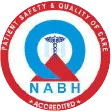







For authentic & scientific
ayurveda
Nagarjuna has developed speciality protocols
and adopted integrated and holistic approaches “to improve
the quality of life of ailing population”.
Gouty Arthritis
Gouty arthritis, commonly known as gout, is a painful and inflammatory form of arthritis that primarily affects the joints. It is characterized by the formation of sharp, needle-like crystals of uric acid within the joints, leading to inflammation, swelling, and extreme tenderness.
Gout occurs when there is an accumulation of uric acid in the body, a waste product that is normally excreted through the kidneys. When the levels of uric acid become too high, it can crystallize and deposit in the joints, triggering an immune response and causing inflammation.
The most commonly affected joint in gout is the big toe, specifically the metatarsophalangeal joint. This sudden and severe onset of pain and swelling in the big toe is often referred to as a gout attack or flare-up. However, gout can also affect other joints, such as the ankles, knees, elbows, wrists, and fingers.
Gout attacks typically occur episodically, with periods of relative remission in between. The onset of a gout attack is often sudden, with intense pain, redness, warmth, and swelling in the affected joint. The affected joint can be extremely tender, making even the slightest touch or pressure unbearable.
Several factors contribute to the development of gout. These include:
- Diet: Consuming foods rich in purines, such as red meat, organ meats, seafood, and sugary beverages, can increase uric acid levels and trigger gout attacks.
- Genetics: Some individuals have a genetic predisposition to gout, making them more susceptible to developing the condition.
- Obesity: Excess body weight can increase the production of uric acid and decrease its excretion, increasing the risk of gout.
- edications: Certain medications, such as diuretics (used to treat high blood pressure) and aspirin, can interfere with uric acid metabolism and contribute to gout development.
The diagnosis of gout is usually based on the characteristic symptoms and the identification of uric acid crystals in joint fluid or through imaging techniques such as ultrasound or X-ray.
The treatment of gout aims to alleviate pain, reduce inflammation, and prevent future gout attacks. During an acute gout attack, nonsteroidal anti-inflammatory drugs (NSAIDs), colchicine, or corticosteroids may be prescribed to provide relief. Lifestyle modifications, including dietary changes (such as reducing purine-rich foods and alcohol consumption) and weight management, are recommended to help prevent gout attacks.
Long-term management of gout involves medications that lower uric acid levels, such as xanthine oxidase inhibitors (e.g., allopurinol) or uricosuric agents (e.g., probenecid). These medications help prevent the formation of uric acid crystals and reduce the frequency and severity of gout attacks.
In addition to medical treatment, lifestyle modifications play a crucial role in managing gout. This includes maintaining a healthy weight, adopting a balanced diet low in purines, staying hydrated, avoiding excessive alcohol consumption, and engaging in regular physical activity.
Untreated or poorly managed gout can lead to chronic gouty arthritis, which is characterized by frequent gout attacks, joint damage, and the development of tophi. Tophi are lumps or nodules that form under the skin around the joints due to the accumulation of uric acid crystals.
It is important for individuals experiencing symptoms of gout, such as sudden joint pain and swelling, to seek medical attention for proper diagnosis and treatment. Effective management of gout can help control symptoms, reduce the frequency of gout attacks, and prevent long-term complications associated with the condition.
Please fill up the form to get in touch with us, or contact us for any queries





Terms of use | Privacy Policy | Contact us
Copyright © 2025. All Rights Reserved
Designed & Developed by Websoul Techserve








